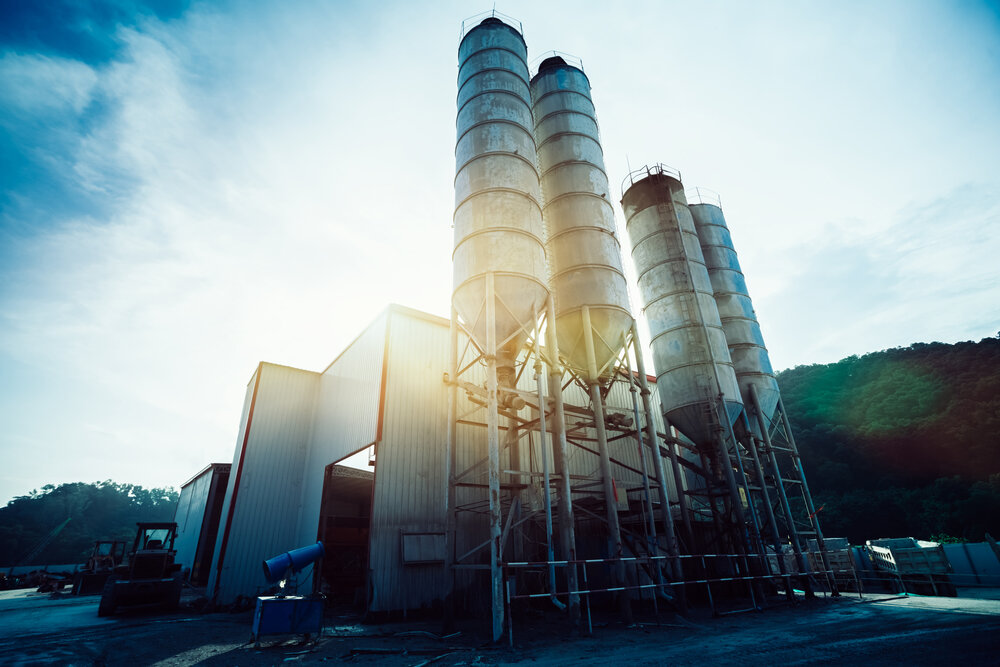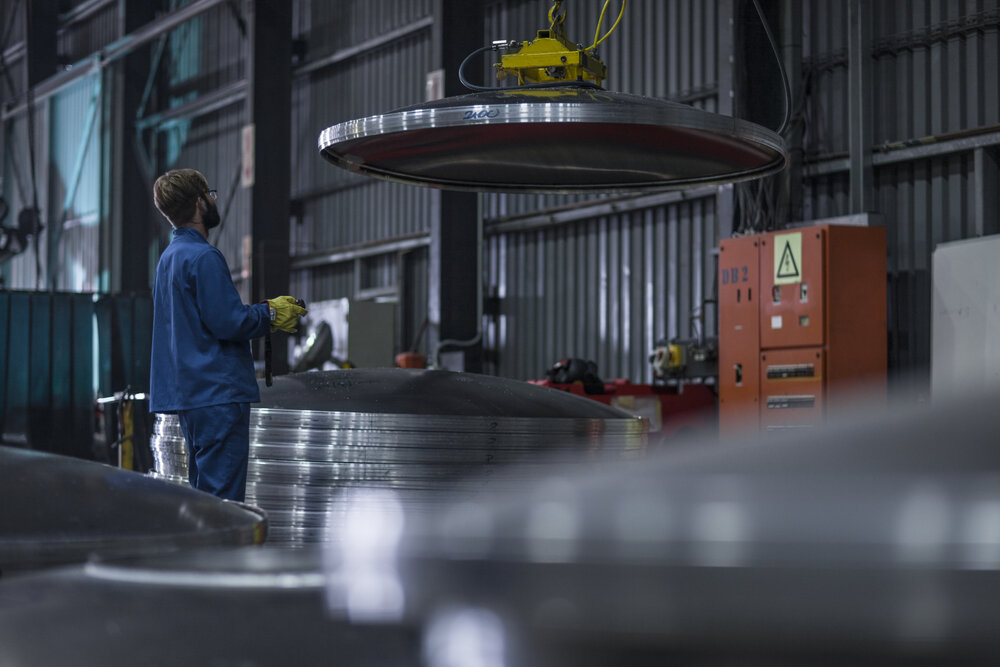Key Takeaways:
- The UK’s Carbon Border Adjustment Mechanism (CBAM) will entirely restructure how carbon-intensive industries manage goods imported and their carbon emissions.
- CBAM will come into full effect on 1st January 2027 for the UK, the biggest shake up in UK carbon pricing in decades.
- The EU has led with a transitional reporting-only phase since October 1st 2023 and ending 31st December 2025. The UK has watched and learned, skipping a transitional phase, meaning both the EU and UK will pay taxes from 1st Jan 2027.
The UK’s Carbon Border Adjustment Mechanism (CBAM) will entirely restructure how carbon-intensive industries manage goods imported and their carbon emissions.
The policy specifically targets CBAM goods that contribute most to industrial pollution, ensuring fair carbon pricing across borders.
Introduced to address carbon leakage risk, CBAM applies to industrial goods imported such as those in the iron and steel sectors or hydrogen production.
The government has confirmed that the UK CBAM liability will depend on embodied emissions and default values, with rules covering liable persons, the accounting period, and powers and penalties for fraudulent evasion.
The scheme will run on a rolling 12-month period, aligning with the first accounting period and other UK ETS reporting cycles.
Our latest article outlines the scope of the UK scheme, how the CBAM will apply to goods imported to the UK, and what the government-published guidance means for businesses.
What is the UK Carbon Border Adjustment Mechanism (CBAM)?
Without a doubt, CBAM is one of the biggest carbon policy shifts in UK history.
The UK Carbon Border Adjustment Mechanism (CBAM) is a new carbon tax on imports. It’s being put in place by the British government, announced officially in December 2023.
As a border adjustment mechanism CBAM, it ensures that goods imported into the UK for free circulation face fair carbon pricing in line with domestic producers.
The EU did it first back in 2023 with full charges beginning in 2026. The UK is now following, mostly to stay competitive. Why? Because if the UK didn’t, then cheap, high-emissions goods could very well flood the UK market.
The EU is our biggest trading partner – aligning on this keeps trade friction low, smoothing relations and protecting the UK’s industries from being undercut by cheaper, high-carbon imports.
It will affect anyone importing energy-intensive goods to the UK, hitting countries like India, China, and Turkey hardest as their weaker climate laws allow them to mass-produce products like steel, aluminium, fertiliser and higher-carbon items.
When Will CBAM Be Implemented in the UK?
CBAM will come into full effect on 1st January 2027 for the UK – the biggest shake up in UK carbon pricing in decades.
Seemingly far away, but it’s not. Just over 1 year to get entire supply chains in order.
By trailing behind the EU for a year, we’ve been able to learn from their wins (e.g. early emission mandatory reporting) and avoid their mistakes (unclear rules).
The UK is now creating reporting systems, guidance, and verification rules – preparing for carbon accounting on an international scale.
A dedicated industry working group will develop detailed guidance for businesses, covering data collection, verification standards, and compliance under customs controls.
A crucial detail is that it’s initially being rolled out for just the carbon giants (aluminium, cement, fertiliser, hydrogen, steel) however this is to get the system in place before expanding rapidly.
Why is the Purpose CBAM of CBAM?

CBAM is happening so that supply chains must be decarbonised. It’s to stop carbon leakage – moving production to countries with dirtier, cheaper energy to then reimport.
This isn’t something companies are actively doing now, but it’s a looming threat (Tata Steel, British Steel) as businesses struggle to compete against the cheap, high-carbon imports facing no carbon taxes.
This evens out the playing field – UK industries pay around £40–60 per tonne of CO₂ emitted while importers pay nothing. For instance Balfour Beatty or JLR – these big names use coal-fired power or inefficient furnaces abroad. Much more polluting, and much cheaper.
CBAM charges will be based on explicit carbon values, with a single default value available when verified data cannot be supplied.
Let’s roughly estimate that Balfour Beatty imports 50,000 tonnes of steel a year. Each tonne would create about 2 tonnes of CO₂: that’s 100,000 tonnes of emissions.
Right now, they’d pay nothing for that carbon. Under CBAM, they’d pay roughly £4–6 million a year for importing that much.
Their hypothetical options would be to:
- Absorb it – and take the £5 mil hit (which would be noticeable, but not dire)
- Pass it on – baking it into project prices and quoting their projects higher
- Change suppliers – and source cleaner materials and low-carbon suppliers.
It’s probable that companies will just pass the cost on, but ultimately as CBAM tightens, sourcing sustainable products will be the only way to stay competitive.
Sectors Affected By UK CBAM

There are only 5 sectors affected by CBAM UK:
- Steel and iron – Vital for construction and vehicles, with products like rebar, sheet steel and structural beams hugely imported from China, Turkey, India and the EU. Most CBAM revenue potential.
- Cement – Used for buildings, bridges, railways, cars, and one of the planet’s most polluting materials. This cement is imported mainly from the EU and Turkey, plus Vietnam.
- Aluminium – Very heavy-emitting to produce, used in vehicles, construction and packaging. Mostly powered abroad by coal in UAE and China.
- Fertiliser – Essential for farming, imported largely from the Netherlands, Egypt and Russia, with natural gas and chemical reactions releasing both methane and CO₂.
- Hydrogen – A clean fuel, but not fully clean yet. Natural gas without carbon capture emitting loads of CO₂, and adding its carbon tax future-proofs the policy by ensuring low-carbon hydrogen stays competitive while high-carbon is taxed.
Out of the hundred plus subsectors in the UK, just these 5 will be taxed under CBAM initially. This is due to their high trade exposure and high emissions intensity. If CBAM works smoothly with these tests, we can expand it to the messier sectors (think glass, electricity or chemicals).
How it Will Impact Your Business
This depends on the type of business. Broadly segmented into two:
1. You’re an importer of one of the 5 affected industries
You’ll need to start carbon accounting sooner rather than later. It’s one of the easiest ways you can future-proof your business, attract key stakeholders and green consumers, optimise supply chains, and avoid carbon taxes just like CBAM.
Without it, you’ll have no accurate data on the goods you’re importing, and pay significantly more than if you’d understood your emissions with carbon accounting, reduced and optimised where possible, and effectively prepared yourself for 2027.
2. You’re not an importer
While you won’t pay CBAM directly, but will feel indirectly raised supply chain costs, or clients asking you to prove your carbon footprint. Moreover, if CBAM proves successful, your industry may very well be affected in upcoming years.
So the best thing you can do is to begin carbon accounting and stay ahead of future taxes, engage with low-carbon suppliers, and use emissions data to stand out.
Calculating UK CBAM
CBAM charges are based on how many CO₂ emissions were released when making a product. Not covering transport, raw materials, or end-of-life – CBAM only focuses on manufacturing.
CBAM focuses instead on total emissions produced during manufacturing, with certain exemptions like returned goods relief to prevent double taxation.
Some critics say this fails to capture the full supply chain, and while true, it’s actually just the easiest place to start, being the most measurable.
It’s to stop carbon leakage, not track full supply chains – though certainly a step in the right direction.
This makes calculations easier – it’s just emissions multiplied by the UK carbon price, minus any carbon cost already paid abroad. The tax point is when goods enter free circulation in the UK.
This means that any overseas carbon pricing already paid will be deducted to avoid duplication, while free allowances under the UK ETS will gradually be phased out to maintain fairness.
A UK carbon price is the price of carbon under UK ETS, which can fluctuate on a quarterly basis similar to a stock price.
In a hypothetical example:
- 1 tonne of steel imported from Turkey.
- Making the tonne of steel emitted 2 tonnes of CO₂.
- The UK carbon price is £50 per tonne of CO₂.
- So your CBAM cost would be 2 × £50 = £100.
- But if Turkey already has a carbon tax of, say, £10 per tonne, you only pay the difference:
- £100 – £20 = £80 per tonne of steel.
At Gaia, our Carbon Accounting Software will do this automatically for you – calculating embedded emissions for imported products with supplier data, generate CBAM-ready reports, and update dynamically with fluctuating prices and changing rules.
UK CBAM Rate
The UK CBAM rate is simply the price per tonne of CO₂ imported – e.g. £50 per tonne.
The rate is linked directly to the price of carbon under the UK Emissions Trading Scheme (basically how much companies pay to emit one tonne of carbon dioxide in the UK).
The permit price is always changing, roughly from £40 – £60 per tonne.
So, the CBAM rate will just match whatever the price is because it keeps things fair between the UK + foreign producers – because the UK companies are already paying carbon costs under ETS.
In other words, CBAM just makes sure that if you pollute to produce, you pay the same price for it regardless of where it’s made.
Preparing for CBAM
CBAM is only a year and 3 months away, yesterday was the time to act.
Don’t wait to panic over carbon data and supplier reports. Use this year to measure, manage, and modernise your supply chain so you’re ready long before 2027 hits.
Gauging supply chains – even just the manufacturing info – can take months. Importers will soon need to report all embedded emissions, from raw material extraction to the manufacturing process. Where to start?
This is exactly what carbon accounting software is made for: tools that automate emissions tracking, convert data to CO₂, and produce CBAM-ready reports.
Gaia’s Carbon Accounting platform is ready-built for CBAM, whether you’re kickstarting your entire carbon accounting journey, or want to zoom into manufacturing emissions.
Any questions? Book in your free demo now: Gaia Demo.
Verification and Compliance
For CBAM to work the taxes paid must be verified, and this will be achieved by independent, third-party verifiers approved by the UK government.
An international group will oversee emissions-intensive sectors, including hydrogen, iron, and steel.
The specialists will be trained to check emissions data against ISO and GHG Protocol, combining manual review with data uploads in a centralised platform.
Verified data will be submitted to a verified body like HMRC, aligning with systems in place under EU.
If already carbon accounting, verification will be a lot easier – sending off reports created in a click that are already in line with verified standards.
UK CBAM Direct and Indirect Emissions

UK CBAM focuses on the embedded emissions of imported goods, involving both Scope 1 and Scope 2 as defined in the GHG protocol.
These are known as emissions embodied within products, representing the total carbon released throughout their manufacturing process.
Scope 1 includes direct emissions from sources owned or controlled by a company. These emissions are those directly released at the goods’ manufacturing site abroad.
They commonly stem from fossil fuel combustion and fugitive emissions, and are generally easier to identify, measure, and manage, making them prime targets for reduction or offsetting efforts.
Scope emissions encompass the indirect emissions let off by generating a business area’s electricity, steam, heating or cooling.
Instead of direct control over the source, this tends to lie in the hands of the providers and can make smart changes to the greener operators as a way to lower emissions.
The Latest UK CBAM Consultation
The most recent UK CBAM consultation fell on April 24th 2025 and ended 3rd July 2025.
Its aims were to draft primary legislation, such as who it applies to, when payments are due, tax calculations, enforcements and penalties.
It crucially confirmed the policy’s start date of 1st January 2027.
There are likely to be subsequent consultations early 2026 that adopt a more technical approach around data and systems.
Past UK CBAM Consultations
Before the technical consultation in 2025, there were two key policy consultations on the CBAM: one in spring 2023 and another in spring 2024.
An introductory consultation, the latter delved into the design of the policy, scope, verification, and emissions coverage.
Over 340 responses from industries asked for better alignment with the EU policy, and other bodies warned of a too-broadended scope.
As a result, glass and ceramics industries were dropped, and the registration threshold (minimum annual import value) raised to £50,000 from a much lower figure.
This meant that less businesses are impacted, but the policy remains realistic and streamlined in preventing carbon leakage.
EU CBAM vs UK CBAM
EU CBAM is a couple years ahead of the UK. They trialled the EU first because the EU ETS was more mature, the UK had left the EU, and it was part of the EU Green Deal.
It’s been in discussion for about 2 years, with the official transitional phase beginning October 1st 2023 until 31st December 2025. During the phase, no taxes are being paid yet.
Importers however have to submit CBAM report listings, containing the imported goods’:
- Type and quantity
- Country of origin
- Embedded emissions during production
- Carbon tax already paid by the manufacturer in the original country.
Reports are uploaded digitally and nationally reviewed.
Exemptions and Thresholds
Of course, the scheme must have exemptions in place to keep it both achievable and realistic.
A few groups won’t be affected:
- Low-value imports below €150 a shipment
- Those importing a total value less than £50,000 a year
- Countries with carbon pricing in place (Iceland, Switzerland, Norway).
- Special cases e.g. humanitarian imports.
Timeline and Next Steps
In late 2025, primary legislation will be drafted and shared in Parliament for approval and publishing.
The legislation is the laws and legal foundation to establish CBAM as part of UK trade and climate law.
In early 2026, then, a secondary legislation will roll out to tweak details appropriately. The timeline allows for the policy to be polished into a tangible framework, preventing global carbon leakage and supporting broad climate goals.
What are the next steps you can take?
What are the next steps you can take?
Sign up for a free demo with Gaia Carbon Accounting to prepare your business ahead of the 2027 CBAM launch. Our software automates carbon data collection, calculates embedded emissions, and generates fully CBAM-ready reports that update dynamically with UK carbon prices and policy changes.
Get your systems ready early, stay compliant, and futureproof your supply chain with Gaia – book in your 30 minute free demo here.
More Information
https://www.gov.uk/government/publications/net-zero-strategy
https://www.makeuk.org/uksteel
https://carbonpricingdashboard.worldbank.org
https://www.oecd.org/en/topics/environmental-policies-and-evaluation.html
https://www.gov.uk/government/organisations/department-for-energy-security-and-net-zero
FAQs
1. What is the UK Carbon Border Adjustment Mechanism (CBAM)?
The UK Carbon Border Adjustment Mechanism (CBAM) is a new carbon tax on imports. It’s being put in place by the British government, announced officially in December 2023.
2. When will the UK CBAM come into effect?
CBAM will come into full effect on 1st January 2027 for the UK – the biggest shake up in UK carbon pricing in decades.
3. Why is the UK introducing CBAM?
CBAM is happening so that supply chains must be decarbonised. It’s to stop carbon leakage – moving production to countries with dirtier, cheaper energy to then reimport.

